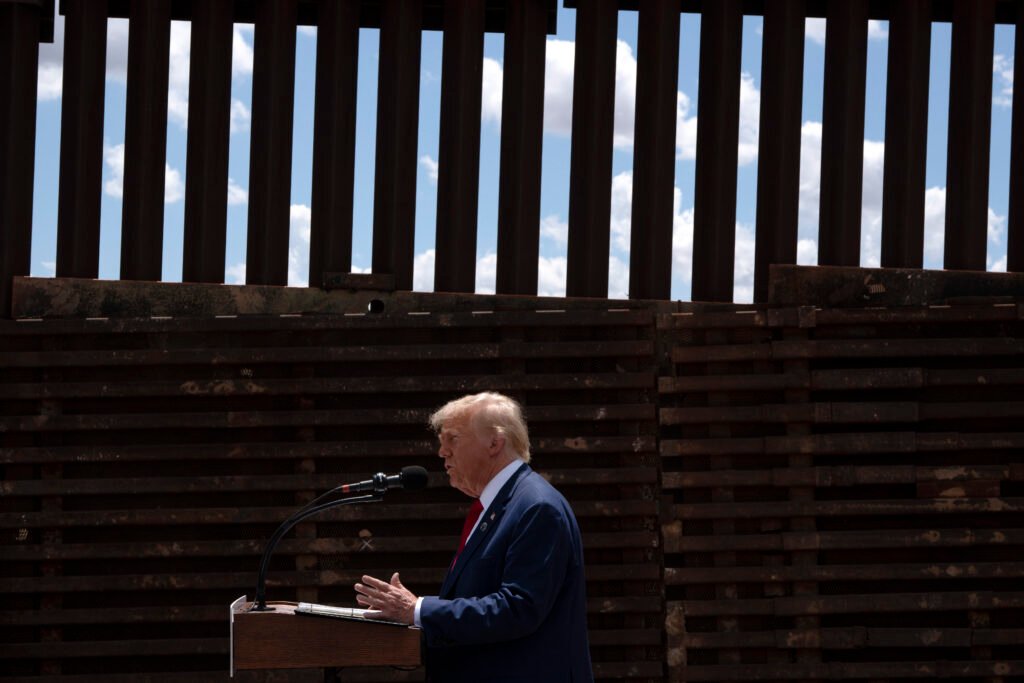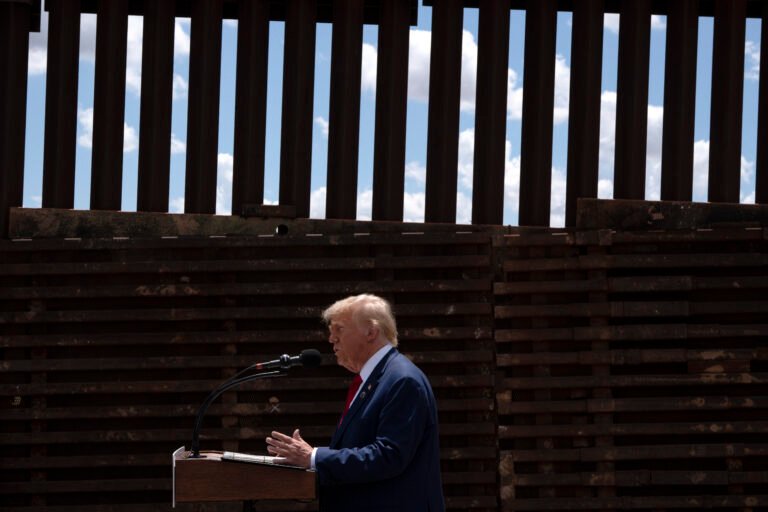
President Donald Trump’s megabill with $170 billion for border and immigration enforcement squeaked through Congress after days of promises, arm twisting and implicit threats to wavering members.
Now — the clock is ticking to spend the money.
The Trump administration has three-and-a-half years to drastically expand the nation’s border enforcement and deportation infrastructure, a massive logistical challenge for which there is no easy comparison. It must hire and train thousands of new immigration officials, secure contracts to ramp up detention capacity and expand the immigration court system. All of that is in pursuit of an ambitious White House target: 1 million annual deportations.
The megabill, which the president signed into law Friday, offers an unprecedented infusion of cash into the country’s immigration enforcement apparatus, but even Trump border czar Tom Homan acknowledges the administration has a great deal of work ahead, especially when it comes to fulfilling Trump’s pledge to hire 10,000 new Immigration and Customs Enforcement agents.
“Look, this isn’t easy. Ten thousand ICE officers? Never happened before,” Homan told POLITICO on Friday. “But I’ll say this: It’s about time … with more money, we can do more.”
Homan is confident the money will be spent by the end of Trump’s term, but couldn’t predict how long it will take for the administration to hit 1 million annual removals. He is already working with ICE to assess how many new agents the agency can hire over the next three months, and how quickly the administration can bring on new detention beds.
The Trump administration’s ability to expeditiously spend the billions it demanded is likely to prove decisive in its effort to increase deportations, a key campaign pledge and a line the administration will likely want to tout ahead of the midterms.
With the new money, the Trump administration will focus on constructing more of the border wall and barriers, while beefing up technology that will allow agents to communicate with each other in cellular and radio dead zones, Homan said.
The administration will also move quickly to grow detention capacity, working with contractors to bring vacant prisons and facilities back online and build up soft-sided facilities like Florida did with “Alligator Alcatraz.”
ICE has been “on a constant chase, trying to move flights out as quickly as possible just to make room for the arrests they’re making — they’re averaging 1,500 to 2,000 a day,” Homan said. “Teams are coming home before the end of a shift because of lack of beds — not a lot, but it’s happened a few times. So the beds are going to get us more capability for detention. That’s the big thing.”
The administration has also been fielding contractor pitches on technology and other solutions to improve its targeting efforts — finding undocumented immigrants inside the country. Homan said the administration will also work with contractors to ramp up transportation and removal flights, while also potentially using them to fill jobs that don’t require a badge or a gun.
John Sandweg, acting ICE director from 2013 to 2014, highlighted the difficulty of hiring that many people that fast for complicated jobs. Significantly expanding ICE’s footprint includes recruiting, vetting, onboarding and training thousands of new officers and will require building out the agency’s human resources department, training centers, office space and resources — from vehicles to weapons.
“That is way harder than it sounds,” Sandweg said. “And this is a second term — they have three and a half years left.”
Past presidents, including Joe Biden, have secured billions from Congress, only to learn that “shovel ready” projects are hard to come by. The Biden administration rushed to get funds out the door before Trump took office, and the current administration has tried to freeze hundreds of billions of dollars in grants — only to be stymied by the courts.
Sandweg estimated deploying 10,000 new officers would take at least three years, and if the administration wants to get this done before Trump’s term ends, “you’re going to have to really push it to the limits in order to get them operational in this administration.”
That has him concerned that vetting standards could be lowered for speed, he said. The rapid build-up of Customs and Border Patrol under former President George W. Bush raised questions about that administration’s hiring standards at the time, which resulted in widespread misconduct at the agency that carried into the Obama administration.
And as illegal border crossings decline, ICE must look within the country to reach its arrest quota — a goal of 3,000 daily apprehensions in recent weeks. But an increase in arrests in the months ahead doesn’t automatically result in more deportations, as it will take time for the administration to build out a “logistical pipeline all over the country,” said Ken Cuccinelli, who served as deputy secretary of Homeland Security during Trump’s first term.
“It’s a whole lot of little contracts with state and local officials. It’s building more facilities. It’s reopening the ones they already have. And all you need is one choke point in the logistics — every convoy is as fast as the slowest ship,” Cuccinelli said. “You’ve got to have the planes, the vehicles, the manpower, the security, in all the right places.”
The domestic policy bill also includes over $1 billion for the immigration court system to hire more judges and staff, but it’s unclear how quickly the administration can build out the courts, and whether it can move at a rate that can keep up with an increased pace of ICE arrests — or if the effort will ultimately result in longer detention time.
The Trump administration’s efforts to work around the immigration courts have been met with legal challenges. And the case backlog is substantial: roughly 700 immigration judges are coping with a 3.5 million case pile-up.
The funding for immigration judges is “important as well, because the system is backlogged,” said Michael Hough, director of federal relations at NumbersUSA, a group that works to reduce both legal and illegal immigration. “Just because you detain these people, especially people who have been here for a while, they need hearings — you’ve got to get them in front of an immigration judge.”
While the White House celebrates the bill’s passage, political pressure is already growing for congressional Republicans to enact new policy. Immigration hawks say the money is crucial, but the party also has to look to legislation that will make permanent changes to the immigration system — such as reviving talks around border security and asylum law from the party’s legislation from last year, known as H.R.2.
“There are other legislative changes that Republicans campaigned on, and that we’re going to continue to be looking to them to move things forward and not just sit on their hands now that they’ve passed the Big Beautiful Bill Act,” said a person close to the Trump administration, granted anonymity to speak candidly. “No, this is a budget reconciliation bill … it’s infused a ton of money into this effort, but there’s still some policy changes that the administration has talked about and wants to pursue.”




